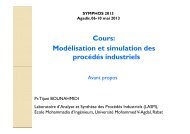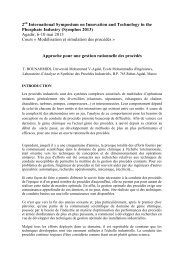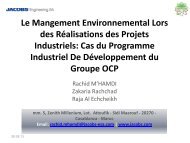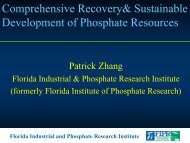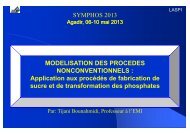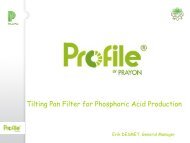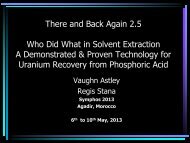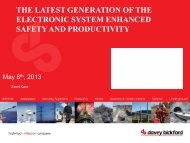Abstract SYMPHOS 2011
Abstract SYMPHOS 2011
Abstract SYMPHOS 2011
Create successful ePaper yourself
Turn your PDF publications into a flip-book with our unique Google optimized e-Paper software.
FOOD SECURITY AND THE ROLE OF FERTILIZER IN SUPPORTING IT<br />
Agriculture & fertilization KN15<br />
W.M. Stewart and T.L. Roberts<br />
International Plant Nutrition Institute, Norcross, GA , USA<br />
World population is expected to increase by some 35% over about the next 40 years. With this projection comes<br />
mounting concerns over an already higher than acceptable level of food insecurity. The issue of food security is<br />
of course much more complex than simple population projections and involves other factors such as economics,<br />
government policies, and natural disasters. The demand on agriculture to increase production will continue<br />
to grow at least for the next few decades. Some new land will likely be put under the plow to help meet the<br />
demand; however, the majority of the increased production will have to come from land already being farmed, thus<br />
necessitating more intensive agriculture and higher crop yields. The great challenge for the world’s farmers and<br />
their affiliates will therefore be to increase output in a (sustainable) manner that minimizes environmental impact<br />
and at the same time provides sufficient, safe, and nutritious products.<br />
Many believe that biotechnology holds the key to producing more food, but it is only one piece of the puzzle. The<br />
employment and further advancement of many technologies (e.g., irrigation, equipment, pest control, fertilizer,<br />
and seed) will be needed to meet the challenge ahead and to close the gap between actual and attainable<br />
yields. It is the positive interactions among the advancement of several technologies that holds the key. Nutrient<br />
management practices and fertilizer technologies are among those that will need to continue advancement and<br />
improvement, as adequate and balanced nutrition is the foundation of healthy crops.<br />
Evaluation of long term field studies has shown that fertilizer input is critical to crop production. In temperate<br />
climates such as in the USA and England the average percentage of yield attributable to fertilizer generally ranged<br />
from about 40 to 60%. However, in the more highly weathered soils of the tropics (Amazon Basin in Brazil and in<br />
Peru) fertilizer input was much more critical to production. After the second year of land clearing yields attributable<br />
to fertilizer and lime were never below 90%.<br />
Based on past evaluations it is safe to say that without adequate plant nutrition, the world would produce only<br />
about half as much staple foods and more forested lands would have to be put into production. Inorganic fertilizer<br />
plays a critical role in the world’s food security, but it must be recognized that highest yields are in some systems<br />
the result of using both organic and inorganic nutrient sources. Integrated soil fertility management is critical to<br />
optimizing food production and efficient use of plant nutrients. The 4Rs — right source at the right rate, right time,<br />
and right place — are the flexible underpinning principles of nutrient management that can be adapted to all<br />
cropping systems to ensure productivity is optimized.<br />
27






